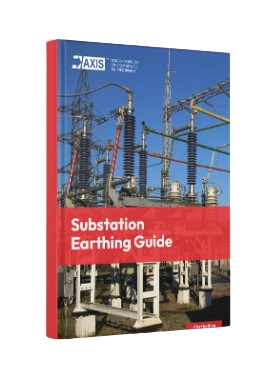Type A & Type B Earthing as per IS/IEC 62305-3:2011
IEC 62305 Part 3 defines two types of arrangements for Earth Electrodes used for structural protection, Type A and Type B. Both of these arrangements form an integral part of the Earth Termination system for the structure, the importance which cannot be overstated for a mains electrical system. In a factory, in order for the equipment to function properly, the grounded circuits need an effective return path from the equipment to the power source. In any kind of construction, the non-current carrying metallic parts in that facility need to be connected together to avoid a voltage potential between them – these metallic parts can include the steel rebar, metallic enclosures, and even the piping running alongside the building.
IEC 62305 – Protection against Lightning
IEC 62305 – Protection Against Lightning, is the apex level document that informs the standards for lightning protection around the world. IEC 62305 Part 3 refers to ‘Physical damage to structures and life hazard’ and a preview to the document can be found here. Specifically, “(t)his standard is applicable to:
- design, installation, inspection, and maintenance of an LPS for structures without limitation of their height,
- Establishment of measures for protection against injury to living beings due to touch and step voltages.
You can learn about the basics of Lightning Protection and Earthing as per IEC 62305 in our other blogs or in the video below.
Lightning Protection System Design and Products
What are Earth Electrodes?

Axis Copper Bonded Earth Rod
The prime function of an earth electrode is the protection of persons. Exposed metal parts and electrical equipment need to be protected to avoid direct or indirect electrocution of humans. This is done by connecting these metallic and electrical parts to conductors which are then connected to the Earth Electrode. For example, in the event of a direct lightning strike to a lightning arrester, the electrical surge flows from the arrester through the down conductors and then into the ground through the Earth Electrodes. You can download our catalogue for Earth Electrodes here or contact us for more information.
Type A Earthing
Type A Earthing or soil embedded earthing usually uses either vertical or horizontal earth electrodes, or sometimes a combination of both. This could mean connecting the down conductors to a copper bonded earth rod that is buried in the ground. For Type A Earthing the length of the vertical and/or horizontal earth electrodes to be connected to each down conductor will be defined in the standard depending on the class of LPS. This is illustrated in the graph below from the paper ‘Earthing for Lighting Protection’ by Shri P.Venkata Ramana, Senior Professor Signal/IRISET. As seen below, LPS Class III & IV require a minimum Earth Electrode length of 5 metres while class I and II require an Earth Electrode length as a function of soil resistivity.

Type B Earthing
Type B Earthing or Ring Earthing forms a perimeter around the structure. Ring Earthing should:
- be a closed ring of conductors If it is not possible to close the ring, a connection must be made inside the building using conductive metallic equipment such as pipes.
- be at least 0.5m below the surface
- be maintained at least 1 metre from the structure.
- have 80% of the length of the ring in contact with natural soil. Thus, no more than 20% of the total length may be in the basement of the structure instead of in direct contact with the soil.
- if the radius of the ring electrode is less than the length of vertical or horizontal earth electrodes required for Type A Earthing then additional horizontal or vertical earth electrodes can be connected to the ring.
Foundation Earth Electrodes are simply concrete reinforced foundations – they are considered to be Type B Earthing. For these Foundation Earth Electrodes, there should be at 50mm of concrete covering the electrode to minimise corrosion. Additionally, the material should meet the requirements defined in IEC 62305 Part 3 Table 7 as shown below.

Connection of a Lightning Protection System to the steel in the concrete foundation can be done for all new constructions since this steel is usually good for equipotential bonding. A dedicated Earth Rod can also be installed in the foundation but then these Earth Electrodes would need to be bonded to the steel in the concrete.
This article is part of our series of articles on Lightning Protection, Surge Protection & Earthing, you can read more with the following links:
Surge Protection Devices (SPD)
Lightning Protection Zones and their Application to SPD Selection
How does a Lightning Arrester work?
For more information, please contact us at axis-india.com/contact-us/








